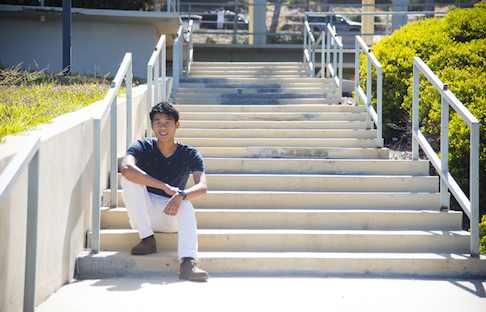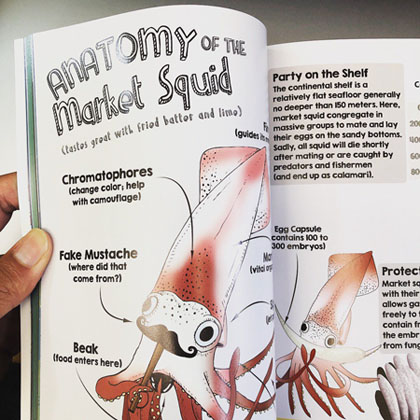Daily Business Report-July 6, 2018
Illustration shows aerial refueling by an MQ-25 drone. (Photo courtesy of General Atomics)
General Atomics maximizing fuel capacity
for unmanned aerial refueling aircraft
General Atomics Aeronautical Systems Inc. (GA-ASI) is using an integrated fuel tank structure to maximize fuel offload for the proposed MQ-25 unmanned aerial refueling aircraft for the U.S. Navy. GA-ASI applied its knowledge of advanced composite aircraft structures to develop integrated fuel tanks in a large-scale wing box test article and a full-scale wing skin pre-production validation article.
The wing box tested to failure via wing bending at GA-ASI’s Adelanto, Calif. structural test facility in November 2017. In April, the company verified the production readiness of the co-cured wing and tail components using both non-destructive and destructive inspections.
“The integral fuel tank wing box test article will reduce technical and schedule risk for the program,” said David R. Alexander, president, Aircraft Systems, GA-ASI. “Specifically, through extensive validation of fuel containment sealing methods, advanced non-linear buckling finite element analysis models and thick composite laminate construction, we have accelerated engineering design consideration prior to the detail design phase and production.”
The MQ-25 is an evolution of the now-defunct Unmanned Carrier Launched Airborne Surveillance and Strike program, which was focused on an unmanned aerial vehicle operating from an aircraft carrier. The Navy is expected to award a contract for the MQ-25 this summer and anticipates the program achieving initial operational capability in 2026.
________________

Ocean Science gets its own comic book
Garfield Kwan, a fourth-year PhD student at Scripps Institution of Oceanography at the University of California San Diego, has a passion not only for science, but also comics. His love for the two resulted in the creation of Squidtoons, a website he launched in 2013 that illustrates science with “farts, burps, and giggles.” Kwan has always been interested in science, outreach, and communication and hopes Squidtoons can help educate the public about science through its visually-appealing yet scientifically-accurate comics.

Kwan is now hoping to expand the site’s reach with the June 26 release of a new book, Squidtoons: Exploring Ocean Science with Comics. The book covers the anatomy of 19 various organisms including the weedy seadragon, the California mantis shrimp, the bone-eating osedax worm, and the tuna crab. While Kwan aimed for the book to appeal to children, he hopes it will also appeal to millennials, a generation that grew up enjoying digital media such as The Oatmeal, a popular comics site.
________________
Coronado is the most expensive
summer destination in California
Coronado is the priciest summer destination in California, according to a survey conducted by LosAngelesHotels.org. The survey compared all notable destinations in the Golden State based on their cost of lodging during the months of July and August 2018. Only hotels rated at least 3 stars and located close to the beach or city center were considered.
At an average nightly rate of $297 for its most affordable double room, Coronado leads the rankings. Only a few dollars cheaper is Huntington Beach, a surf resort in the southeast part of Los Angeles. The Top 3 podium is rounded out by the famous Santa Monica. There an overnight guest will have to spend $254, on average, for the least expensive room.
Palo Alto ranks fourth most expensive on the survey at an average cost of $252 per night. That price tag positions it as the highest California destination without a beach. Also listed among the 10 priciest destinations are Napa and San Jose, with overnight rates of $231 and $226 respectively for their cheapest available room.
The following table shows the 10 most expensive summer destinations in California. The prices shown reflect the average rate for each city’s cheapest available double room (minimum 3-star hotel) for the period spanning July 1 through August 31, 2018.
- Coronado $297
- Huntington Beach $292
- Santa Monica $254
- Palo Alto $252
- Laguna Beach $237
- Pismo Beach $236
- Santa Barbara $234
- Napa $231
- Santa Cruz $226
- San Jose $226
________________
Cannabis vs. Cancer: a biologist
weighs in at July 12 program
World-renowned molecular biologist Dr. Cristina Sánchez is flying from Spain to San Diego to participate in a local nonprofit event, “Cannabis Vs. Cancer,” on July 12. This event is free of charge and open to the public.
Local nonprofit Community Alliance Program’s event will take place from 6 to 8 p.m. at San Diego Central Library in Downtown San Diego. Sánchez will discuss the science and potential of cannabinoids to inhibit cancer cell growth. She is among a team of biologists and neuroscientists in Madrid, Spain at Complutense University of Madrid who has been studying the effects of THC, a cannabis compound, on cancer tumors for over a decade.
________________
The rising price of ‘highest spend’
medications in Medicare Part D
Perhaps surprising no one, researchers at Skaggs School of Pharmacy and Pharmaceutical Sciences at UC San Diego have found that the cost for the 10 “highest spend” medications in Medicare Part D — the U.S. federal government’s primary prescription drug benefit for older citizens — rose almost one-third between 2011 and 2015, even as the number of persons using these drugs dropped by the same amount.
Writing in the July 4 issue of the Journal of the American Geriatrics Society, Jonathan Watanabe, associate professor of clinical pharmacy in the Skaggs School of Pharmacy, and colleagues report that the amount Medicare Part D paid for the 10 medications with the largest spending increased from an inflation-adjusted $21.5 billion in 2011 to $28.4 billion in 2015, a 32 percent increase. In that same time period, the number of patients treated with at least one of these medications also declined 32 percent, from slightly more than 12.9 million patients in 2011 to 8.8 million in 2015. The average annual decrease in patient numbers was 7.9 percent.
________________
San Diego Foundation awards $2.6 million
in scholarships to 876 students
The San Diego Foundation announced more than $2.6 million in scholarships to 876 students pursuing higher education during the 2018-2019 school year. The scholarships are made possible through 143 unique funds established by donors through the Community Scholarship Program at The Foundation.
According to research from the Public Policy Institute of California, only a fraction of students in California capable of earning a degree actually do, and students from underserved communities are greatly underrepresented in colleges and universities. The Community Scholarship Program ensures more San Diego students have the opportunity to accomplish their academic goals.
Among the scholarship recipients for the 2018-2019 school year, 66 percent are the first in their families to attend college, and 76 percent are considered low-income students based on Expected Family Contribution data.



